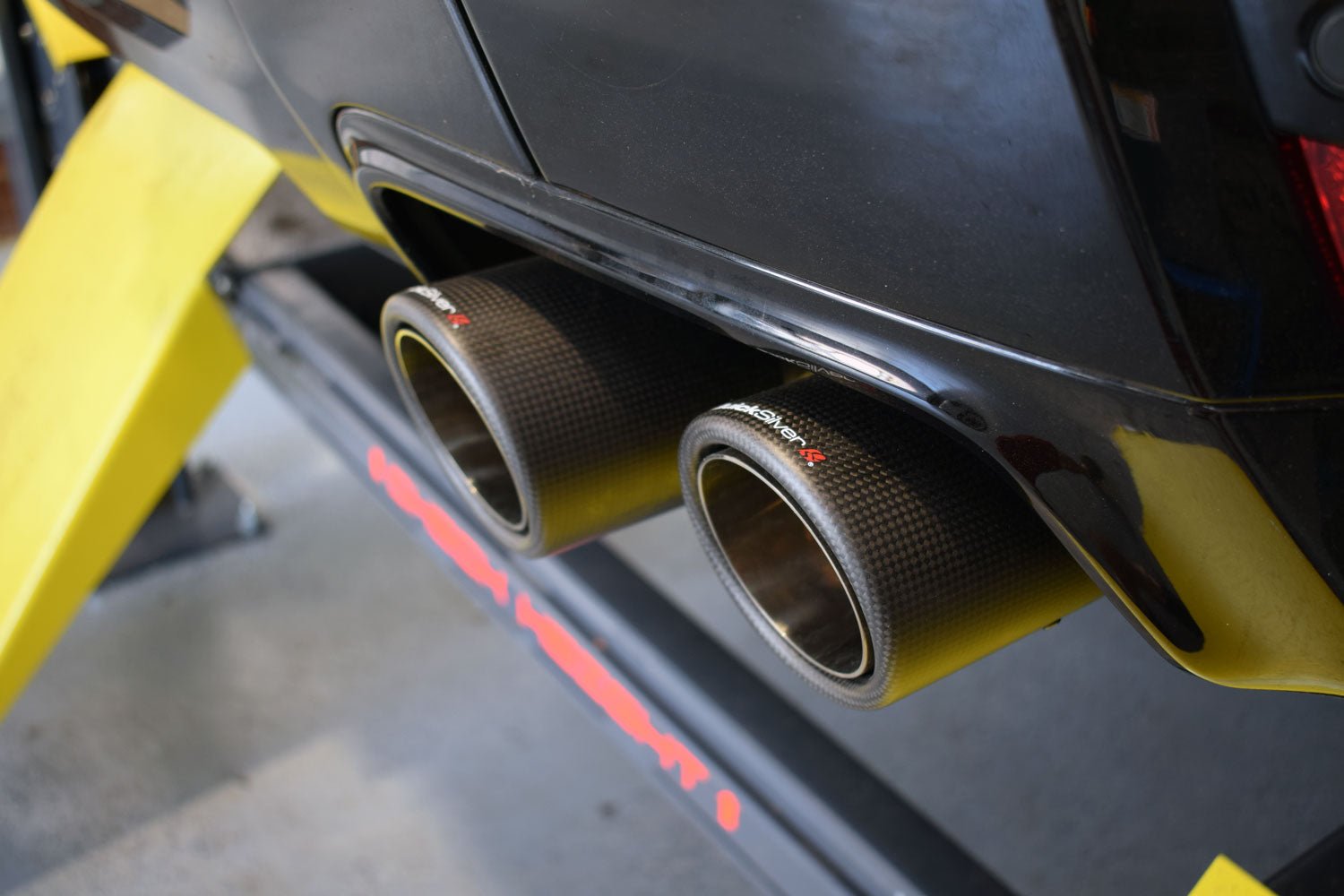Common Signs of a Faulty Exhaust System
Your vehicle’s exhaust system plays a crucial role in performance and efficiency. When it starts to fail, you’ll notice distinct signs. Let’s look at the common indicators that suggest your exhaust system might be faulty.
Unusual Noises
If you hear loud noises emanating from your vehicle, it’s often a red flag. A healthy exhaust system operates quietly, so if you notice:
- Rattling or Clanging: This may indicate loose parts or damaged brackets.
- Deep Rumbling: A louder rumbling sound could be a sign of a hole or crack in the exhaust.
If you experience these sounds, it’s best to have your exhaust system inspected by a professional.
Strong Foul Smells
Typically, you shouldn’t be able to smell exhaust fumes while driving. If you detect a strong, unpleasant odor, it could signal a leak. This is especially concerning because exhaust fumes contain harmful gases, including carbon monoxide. If you notice:
- Strong Gas Odors: A gasoline smell could indicate a problem with the fuel system.
- Rotten Egg Smell: This could be a sign of a failing catalytic converter.
It’s essential to address any unpleasant smells immediately for your safety.
Decreased Fuel Efficiency
When your exhaust system isn’t functioning optimally, your vehicle may consume more fuel. If you find yourself refueling more often without any change in driving habits, it’s worth investigating. Common exhaust issues that affect fuel efficiency include:
- Clogged Catalytic Converter: This can restrict exhaust flow, forcing the engine to work harder.
- Leaky Exhaust System: This can alter engine performance, leading to inefficient fuel consumption.
Monitor your fuel mileage to catch these issues early.
Vibrations while Idling
Excessive vibrations, especially when your vehicle is idling, can indicate a problem with the exhaust system. A malfunctioning exhaust often leads to imbalanced engines or misfiring. If you feel:
- Unusual Shaking: This common sign suggests that the components are not working in harmony.
- Increased Engine Vibration: This could throw off the exhaust system’s alignment.
Pay attention to these vibrations as they may be an early warning before more costly repairs are needed.
Check Engine Light
Modern vehicles come equipped with sensors that can detect exhaust system problems. If your check engine light comes on, don’t ignore it. Often, this light can indicate:
- Issues with the Oxygen Sensors: These sensors measure unburnt oxygen in the exhaust gases and can signal a problem.
- Catalytic Converter Malfunction: A failing catalytic converter may trigger the light and will need immediate attention.
Running a diagnostic will help pinpoint the exact issue associated with your engine warning light.
Excessive Smoke
If you see smoke emanating from your exhaust pipe, it’s time to take action. Depending on the color of the smoke, it can signify different problems:
- White Smoke: This typically indicates coolant is leaking into the engine, possibly due to a blown head gasket.
- Blue Smoke: This may suggest that the engine is burning oil.
- Black Smoke: This often indicates too much fuel is being burned, signifying issues with the fuel system.
Excessive smoke can indicate serious issues that shouldn’t be overlooked.
Keeping an eye out for these common signs of a faulty exhaust system can save you headaches and money down the road. If you notice any of these indicators, consult with a qualified mechanic right away. Addressing issues early can help maintain your vehicle’s performance and keep you safe on the road.
The Role of the Exhaust System in Vehicle Performance
The exhaust system plays a crucial role in the overall performance of a vehicle. It not only ensures that harmful gases are eliminated from the engine but also contributes significantly to the vehicle’s efficiency and power. Understanding how the exhaust system impacts performance will help you appreciate the engineering that keeps your vehicle running smoothly.
Components of an Exhaust System
The exhaust system consists of several key parts, each performing a specific function. These include:
- Exhaust Manifold: This part collects exhaust gases from the engine’s cylinders and channels them into the exhaust pipe.
- Catalytic Converter: This component reduces harmful emissions by converting them into less harmful substances.
- Resonator: This piece helps to modify sound waves and reduces noise from the engine.
- Muffler: The muffler minimizes the noise created by the engine and is a key factor in creating a pleasant driving experience.
- Exhaust Pipes: These pipes transport gases from the manifold to the rear of the vehicle, allowing them to exit safely.
Performance Impact of the Exhaust System
An efficient exhaust system significantly improves your vehicle’s performance. Here are some ways it contributes:
- Improved Engine Efficiency: A properly functioning exhaust system helps to reduce backpressure, allowing the engine to expel exhaust gases more effectively. This results in better fuel combustion and improved efficiency.
- Boosted Horsepower: When the exhaust system is optimized, it can enhance an engine’s horsepower. High-performance aftermarket exhaust systems often allow for greater gas flow, leading to increased power output.
- Better Fuel Economy: An efficient exhaust system can lead to better fuel economy. With less backpressure and better gas expulsion, the engine works more efficiently, which can reduce fuel consumption.
- Lower Emissions: A well-maintained exhaust system helps to ensure that harmful gases are filtered and converted into less harmful substances before they are released into the atmosphere. This is crucial for meeting environmental regulations and reducing your carbon footprint.
Common Issues with Exhaust Systems
While the exhaust system is designed for longevity, it can encounter several common problems that affect vehicle performance:
- Leaking Exhaust: Cracks or holes in the exhaust pipes can cause leaks, leading to decreased efficiency and increased emissions.
- Catalytic Converter Failure: If the catalytic converter becomes clogged or damaged, it can severely impact engine performance and lead to higher emissions.
- Noise Problems: A failing muffler can result in increased noise levels, which can affect your driving experience and potentially violate noise regulations.
- Rust or Corrosion: Over time, exhaust components may develop rust due to exposure to moisture and road salt, leading to premature failure.
The Importance of Regular Maintenance
To ensure your exhaust system performs optimally, routine maintenance is vital. Here are some tips for keeping your exhaust system in check:
- Regular Inspections: Have your exhaust system inspected regularly to catch issues early. Look for signs of rust, leaks, and damage.
- Listen for Unusual Noises: Pay attention to any loud or strange noises coming from the exhaust area, as these may indicate a problem.
- Monitor Emissions: Check for any warning lights on your dashboard that may indicate emissions-related issues.
- Seek Professional Help: If you notice any signs of trouble or degradation, consult a mechanic for a detailed assessment.
Understanding the crucial role of the exhaust system in vehicle performance equips you with valuable knowledge. By paying attention to your vehicle’s exhaust system and engaging in regular maintenance, you can enhance your driving experience while ensuring your car operates safely and efficiently. Investing time and care into your exhaust system is essential for maximizing both performance and environmental responsibility.
How to Inspect Your Exhaust System at Home
Your exhaust system plays a vital role in your vehicle’s performance and overall efficiency. Regular inspections can help you spot issues early and maintain a smooth ride. Here’s how to inspect your exhaust system right at home.
Gather the Right Tools
Before getting started, ensure you have the necessary tools:
- Safety Gear: Gloves and safety goggles.
- Jack Stands: To elevate your vehicle safely.
- Flashlight: For better visibility.
- Wrench Set: For any tight connections.
- Mirror: To inspect hard-to-reach areas.
Start with a Visual Inspection
Begin your inspection by visually checking the exhaust system while the vehicle is off. Look under the car to examine the entire length of the exhaust from the engine manifold down to the tailpipe.
Check for Visible Damage
Examine the following components:
- Pipes: Look for rust, holes, or any signs of wear.
- Exhaust Manifold: Check for cracks.
- Seals and Gaskets: Ensure there are no leaks around connections.
- Catalytic Converter: Look for physical damage or excessive rust.
- Tailpipe: Make sure it’s firmly attached and has no physical damage.
Listen for Unusual Noises
Once you’ve visually checked the exhaust system, start your vehicle and listen carefully:
- Rattling Sounds: This could indicate loose parts inside the exhaust.
- Hissing or Popping: Often suggests a leak in the exhaust manifold or pipe.
- Deep Rumbling: May indicate a failing muffler.
If you hear any of these noises, you might need further investigation or repair.
Inspect for Exhaust Fumes
Take a moment to observe the color of the exhaust emissions. Here’s what to look out for:
- White Smoke: Could mean coolant is leaking into the engine.
- Blue Smoke: Often indicates oil burning within the engine.
- Black Smoke: Indicates a fuel issue, when the engine burns too much fuel.
If you notice any abnormal colors, consult a professional mechanic.
Check for Rust and Corrosion
Rust can weaken metal components and lead to failures. Use your flashlight to inspect all metal parts of the exhaust system. Pay close attention to these areas:
- Exhaust pipes
- Muffler
- Catalytic converter
If you find any rust, it may need further evaluation to determine if immediate replacement is necessary.
Evaluate Mounting and Hangers
The exhaust system is typically held in place by mounts and hangers. Inspect them for:
- Cracks
- Loose bolts
- Signs of wear or decay
If any hangers are damaged, they should be replaced to prevent unnecessary movement of exhaust components.
Take It for a Test Drive
After checking everything, take your vehicle for a short drive. Pay attention to any vibrations, noises, or changes in performance. If anything feels off, it may indicate a problem within the exhaust system.
Know When to Seek Professional Help
While inspecting your exhaust system at home is essential, don’t hesitate to consult a professional mechanic if you find any significant issues. Getting expert advice can save you costly repairs down the line.
Regular maintenance of your exhaust system is crucial for being road-ready. By following these steps, you can keep your vehicle running smoothly and efficiently.
The Environmental Impact of a Malfunctioning Exhaust System
A malfunctioning exhaust system can lead to serious environmental issues. When your vehicle’s exhaust components break down, they release harmful substances into the air. Knowing the environmental effects of a faulty exhaust system is crucial for both your health and the health of our planet. Here are some key points to consider.
Increased Emissions of Harmful Gases
The most immediate effect of a malfunctioning exhaust system is the increased release of harmful gases. These gases include:
- Carbon Monoxide (CO): A toxic gas that can affect air quality and human health.
- Nitrogen Oxides (NOx): Contribute to smog formation and respiratory problems.
- Hydrocarbons (HC): Contribute to ozone layer depletion and pose serious health risks.
When your exhaust system is not functioning properly, it struggles to filter out these toxins effectively, allowing them to escape into the atmosphere. This can worsen air quality in your community, leading to various health issues and environmental harm.
Contribution to Climate Change
Vehicles are a significant source of greenhouse gas emissions. An inefficient exhaust system can increase these emissions, contributing to global warming. Specifically, carbon dioxide (CO2) is released in greater quantities when the exhaust system is not functioning optimally. For instance:
- Fuel Inefficiency: A faulty exhaust system can lead to incomplete combustion, which means that your vehicle uses more fuel and emits more CO2.
- Higher Engine Stress: The engine may work harder to compensate for exhaust issues, directly increasing emissions.
Reducing CO2 emissions is vital in the fight against climate change. Every small change can have a significant impact, and ensuring your exhaust system is in good working order is a step in the right direction.
Impact on Local Wildlife
Air pollution from vehicles does not just affect humans; it has far-reaching consequences for local wildlife as well. The toxic emissions can contaminate habitats, making them unsafe for animals to thrive. Some effects include:
- Altered Habitats: Pollutants can change the structure of local ecosystems, affecting plants and animals.
- Reduced Biodiversity: Sensitive species may decline or disappear due to poor air quality.
Additionally, the accumulation of pollutants in the food chain can lead to health issues in larger animals and can ultimately affect humans as well.
Health Risks for Humans
The environmental impact of a faulty exhaust system extends to human health. Breathing polluted air can lead to respiratory diseases, heart problems, and other serious health issues. You may experience:
- Shortness of Breath: Increased levels of smog and pollutants can lead to difficulty in breathing.
- Allergies and Asthma: Exposure to harmful emissions may worsen allergies or asthma conditions.
- Long-term Health Effects: Continuous exposure to toxic air can contribute to serious diseases like cancer.
Taking care of your vehicle’s exhaust system is a critical step in protecting public health. When everyone does their part to maintain their cars, the collective impact can significantly improve air quality.
: The Importance of Regular Maintenance
Given the various environmental issues stemming from a malfunctioning exhaust system, it’s essential to prioritize regular vehicle maintenance. You can reduce harmful emissions and protect both your health and the environment by being proactive. Common practices include:
- Regular Inspections: Check the exhaust system for leaks or damages.
- Timely Repairs: Address any issues promptly to minimize environmental impact.
- Routine Maintenance: Keep your vehicle in good condition to ensure efficient fuel use.
By understanding the implications of a faulty exhaust system, you can contribute to a healthier environment and a more sustainable future. Take action today to help reduce your vehicle’s environmental footprint.
Repairing vs. Replacing: What to Do When Your Exhaust System Fails
When your exhaust system fails, you may be caught between two choices: repairing it or replacing it entirely. Understanding the differences and implications of each option can help you make an informed decision that fits your budget and needs.
Signs of Exhaust System Failure
First, it’s essential to recognize the signs indicating that your exhaust system might be failing. Paying attention to these symptoms can save you from expensive repairs in the long run:
- Strange Noises: If you hear loud noises coming from your vehicle, especially a hissing or loud rumbling, it could mean your exhaust system has issues.
- Reduced Fuel Efficiency: A faulty exhaust system may lead to poorer gas mileage, making your trips costlier.
- Unpleasant Odors: If you notice unusual smells like rotten eggs inside or around your vehicle, it might signal an exhaust problem.
- Vibrations and Rumbles: Excessive vibrations during your drive or a sudden change in how your vehicle feels can indicate exhaust system damage.
- Check Engine Light: If this warning light appears, it’s time to get your vehicle checked, as it could relate to exhaust problems.
Repairing Your Exhaust System
When considering repairs, take into account the nature of the damage. Minor issues such as small leaks, loose hangers, or broken clamps are often repairable. Repairing is generally less expensive and can extend the life of your exhaust system.
- Cost-Effective: Repairs typically cost less than a full replacement, making it a more budget-friendly option.
- Quick Turnaround: Most repairs can be done in a few hours, allowing you to get back on the road soon.
- Environmental Considerations: Repairing parts instead of replacing them can be a more eco-friendly choice, reducing waste.
However, it is crucial to assess whether your exhaust system is worth repairing. If the damage is extensive, you may end up investing more in repairs than the value of a new system.
Replacing Your Exhaust System
Sometimes, replacing your entire exhaust system may be the best option. Here are a few scenarios where replacement could be more beneficial:
- Severe Corrosion: If rust or corrosion has compromised the integrity of the exhaust system, replacement might be the only viable solution.
- Multiple Failures: Repeated repairs on different parts of the system can add up. If you’ve made multiple repairs recently, it might be time for a new system.
- Performance Upgrade: If you’re looking for improved performance, upgrading to a high-performance exhaust system can enhance your vehicle’s functionality.
Replacement ensures that you have a reliable exhaust system for years to come. New parts often come with warranties, providing peace of mind.
Factors to Consider
When deciding between repairing or replacing your exhaust system, consider the following:
- Cost: Calculate the costs of both options, including parts and labor.
- Age of Your Vehicle: If your car is older and may need more repairs soon, investing in a new exhaust system could be wise.
- Frequency of Repairs: If you frequently encounter issues, replacement might save you time and money in the long run.
- Safety and Emissions: Make sure your choice meets safety standards and does not harm the environment further.
Ultimately, the choice between repairing and replacing your exhaust system hinges on the specific scenario. Regular maintenance and timely assessments are key to ensuring you make the right decision for your vehicle’s needs.
Whether you opt for a repair or a complete replacement, knowing the indicators of exhaust system failure and weighing your options can help you stay safe on the road while maintaining your vehicle’s performance.
Conclusion
A well-functioning exhaust system plays a crucial role in your vehicle’s overall performance and efficiency. If you notice any common signs of a faulty exhaust system, such as unusual noises, change in fuel efficiency, or visible rust and damage, addressing these issues promptly is essential for maintaining your car’s health. Regular inspections at home can help you catch potential problems early, allowing for minor repairs before they escalate into costly replacements.
Moreover, a malfunctioning exhaust system is not just a personal concern; it poses environmental hazards too. Increased emissions contribute to air pollution, affecting the health of the community and the planet. Hence, understanding the importance of a properly functioning exhaust system goes beyond personal convenience; it resonates with global responsibility.
When faced with exhaust system failure, knowing whether to repair or replace the components can save you time and money. Weighing the cost of repairs against the potential benefits of replacement will guide your decision. If you’re uncertain, consult with a trusted mechanic who can provide insights tailored to your specific situation.
By being proactive about your exhaust system’s maintenance and addressing any warning signs early on, you ensure not only your safety on the road but also contribute positively to the environment. Taking these simple steps can lead to better vehicle performance while helping to protect the planet for future generations. Your car’s exhaust system is an essential piece of the puzzle—don’t overlook its impact!





